Fishing vessels cutting costs and reducing emissions thanks to pioneering Ecomotus technology
Over the past 15 years Ecomotus, a Devon-based company founded by Jason and Kirstyn Munro, dedicated to helping fisherman to improve their sustainability credentials while also reducing operational costs, have focused on researching and certifying a stand-alone catalytic system to improve fuel combustion in all types of internal combustion engines.
The result is the EcoPro Electrolyser, a RINA type approved and Maritime and Coastguard Agency accepted system that complies with regulatory standards and establishes Ecomotus as pioneers in the use of hydrogen for marine applications.
Tackling climate change is one of the biggest challenges facing the seafood sector.
Fossil fuels burned in a vessel’s engine result in pollutants, including carbon dioxide (CO2), sulphur oxides (SOx), nitrogen oxides (NOx) and particulate matter.
These pollutants are released through the vessel’s exhaust, contributing to air pollution and climate change.
“There is considerable pressure on the fishing industry to reduce emissions through new technology. While there’s funding out there to go electric, it's not really a practical solution for a lot of people yet. There’s currently no cost-effective way forward for vessel engine and this is where the Ecomotus EcoPro fits in.” Adrian Bartlett, retired crabber and Head of Marine Operations at Ecomotus.
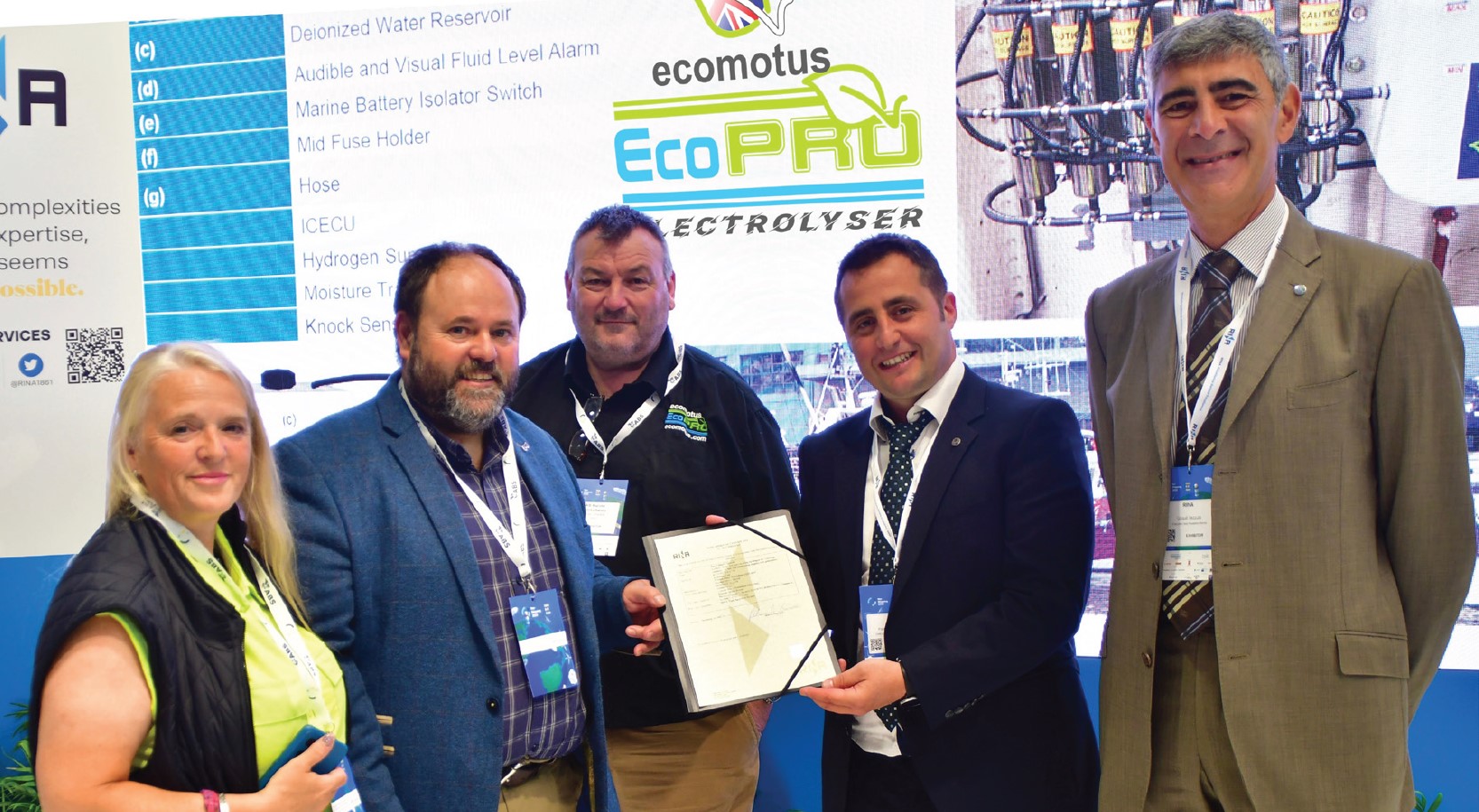
So how does it work?
The EcoPro Electrolyser enriches the air flow into the engine combustion chamber by adding a precise amount of hydrogen so fuel combustion is optimised and the production of diesel particulates reduced.
When the engine is running, the EcoPro’s inbuilt computer calculates the exact amount of hydrogen required for optimum fuel combustion. The system operates at atmospheric pressure without the need for hydrogen storage, as this is produced on demand from the electrolysis of deionised water.
The electrolysis process breaks water molecules into hydrogen and oxygen.
The hydrogen enriches the air flow fed directly into the engine combustion chamber, whilst the oxygen by-product is vented to the atmosphere. This ensures the immediate utilisation of hydrogen in the combustion process without any potential risks associated with its storage in gaseous or liquid form.
Information is sent back to the Ecomotus head office for monitoring and operational adjustment. A dashboard link enables vessel owners to see how their engine is operating, whether they are onboard or ashore.
Other emission reducing solutions combust fuel as normal, and then clean up the combustion gases before release into the atmosphere. We are burning it better right at the source, at the point of combustion.
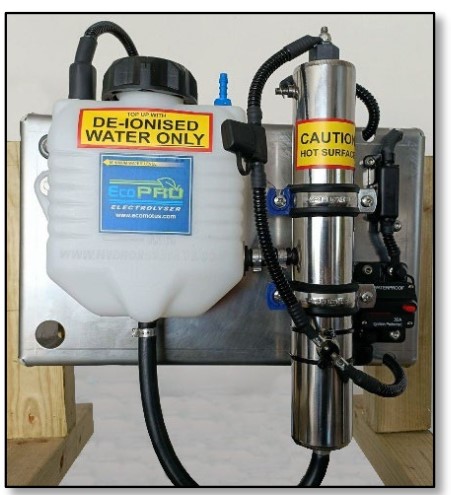
Streamlining Engine Maintenance
The EcoPro system needs minimal servicing, with simple daily checks on the deionised water levels.
Once commissioned, it immediately starts cleaning carbon deposits inside the engine. Ongoing use maintains this process, reducing wear on engine components, and therefore reducing engine maintenance frequency, including engine oil changes.
The Ecomotus EcoPro testimonials
An important aspect of understanding the benefits of any new technology is trialling how it works in practice and then analysing the results...
The Crystal Sea - Newlyn twin-rig trawler
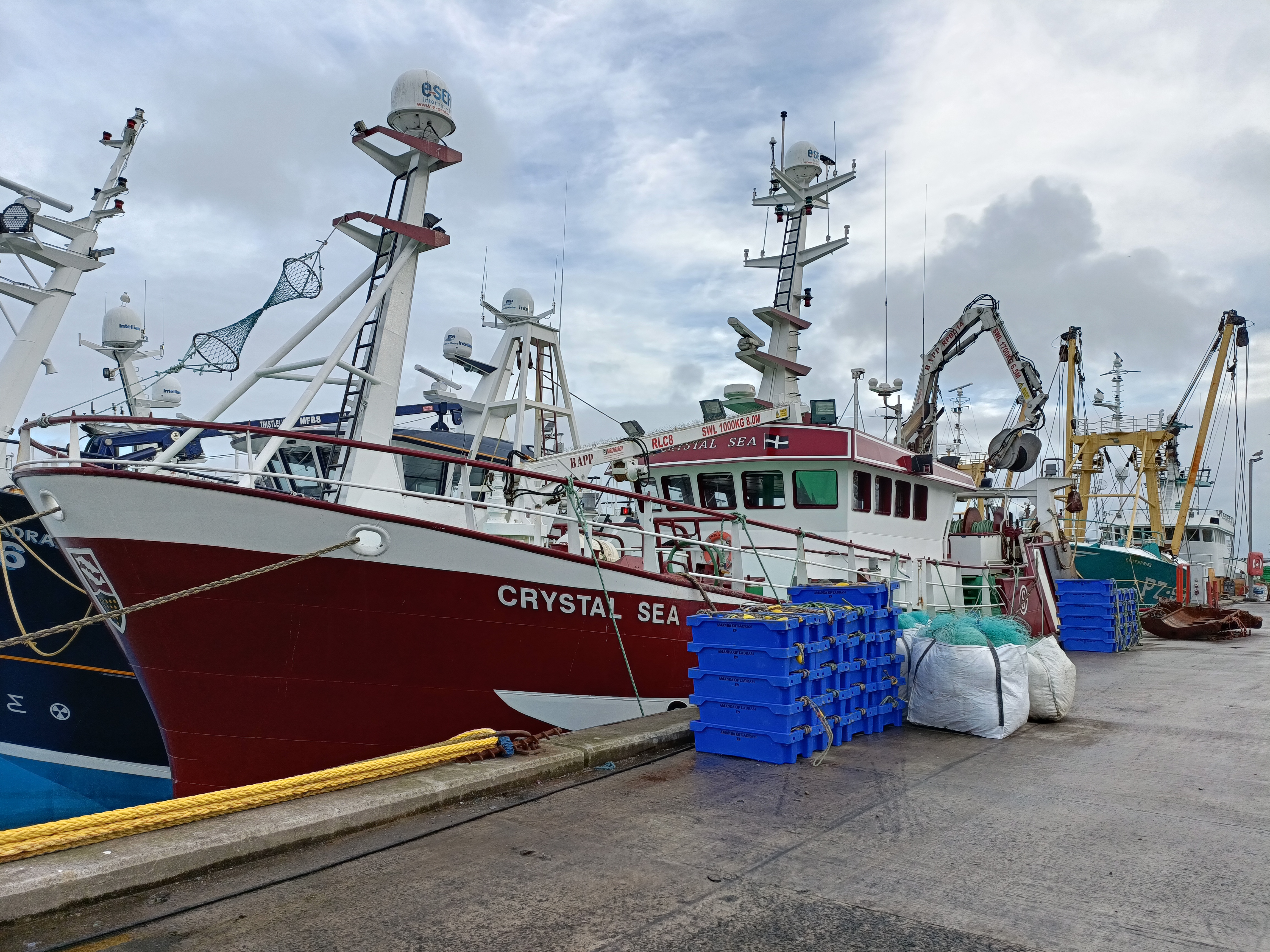
The Crystal Sea, a 24.5-metre twin-rig trawler skippered by brothers David and Alec Stevens, installed the EcoPro electrolyser in December 2022 before full utilisation of the system started in January 2023. The 490-kilowatt vessel operates out of Newlyn Harbour in southwest Cornwall and targets multiple species including flatfish and monkfish.
The number of electrolyser cells, and therefore the cost of installation, depends on the size of the vessel engine. The Crystal Sea's EcoPro system had an initial cost of £22,000, but thanks to the FaSS funding funding available for sustainable and resilient technologies, the total expense to the business was £11,000.
David Stevens said that while there are several options on the market that can clean exhaust fumes, the EcoPro was the only option he was aware of that reduced emissions and fuel use. With fuel being one of the biggest running costs of a fishing vessel, the economic and environmental benefits of installing the technology are clear.
“We use around 8% less fuel, saving somewhere between 500 and 1,000 litres a week,” added David.
“With the fuel price currently at £0.80/litre, we save a good £400-800 every week.”
This means the Crystal Sea is reducing her carbon footprint by an estimated 1.3 to 2.6 tons CO2 each week she goes to sea.
David added: “Say we save £500 a week; it's going to take 22 weeks to pay back. We should see our money back within a year, no problem at all.”
“In fact, I would say we've got our money back already.
“The EcoPro lessens maintenance as the oil doesn't get anywhere near as dirty as it used to.
“We could probably go double the operating time between oil changes if we wanted to.”
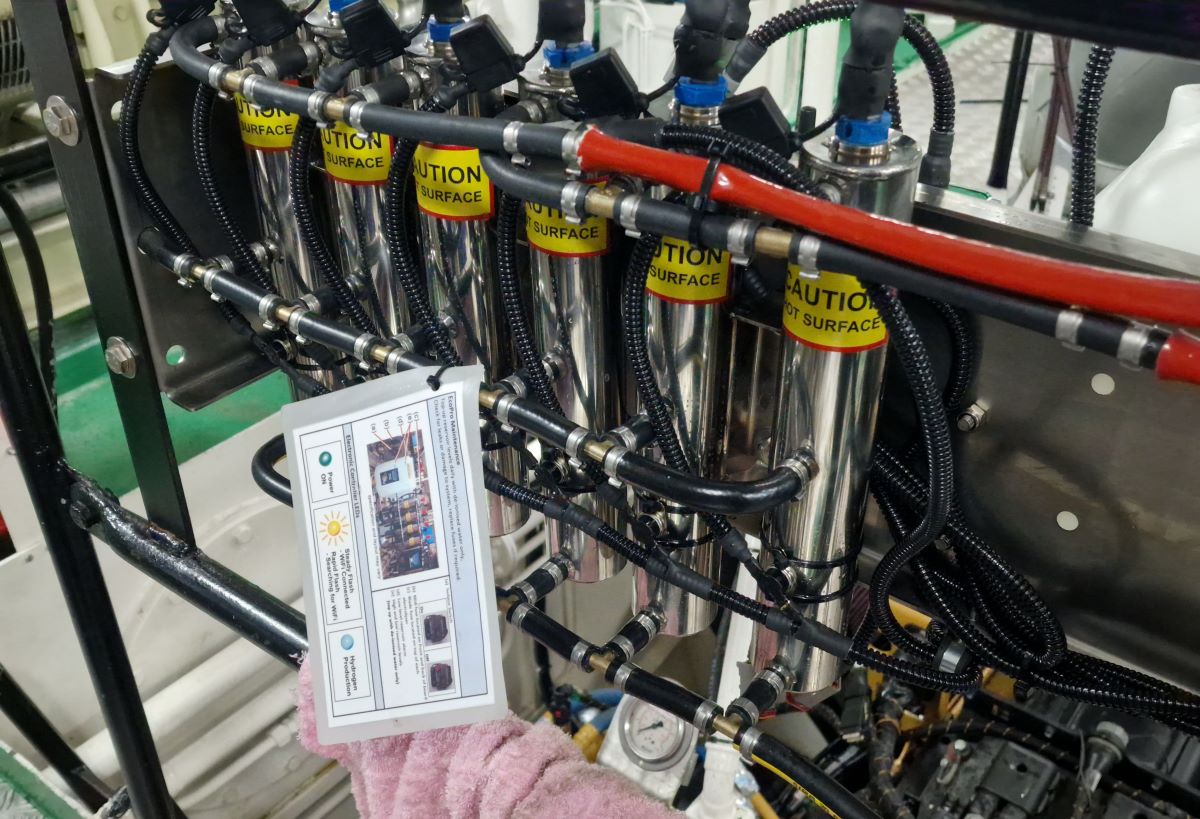
The Emma Jane-Salcombe Crabber
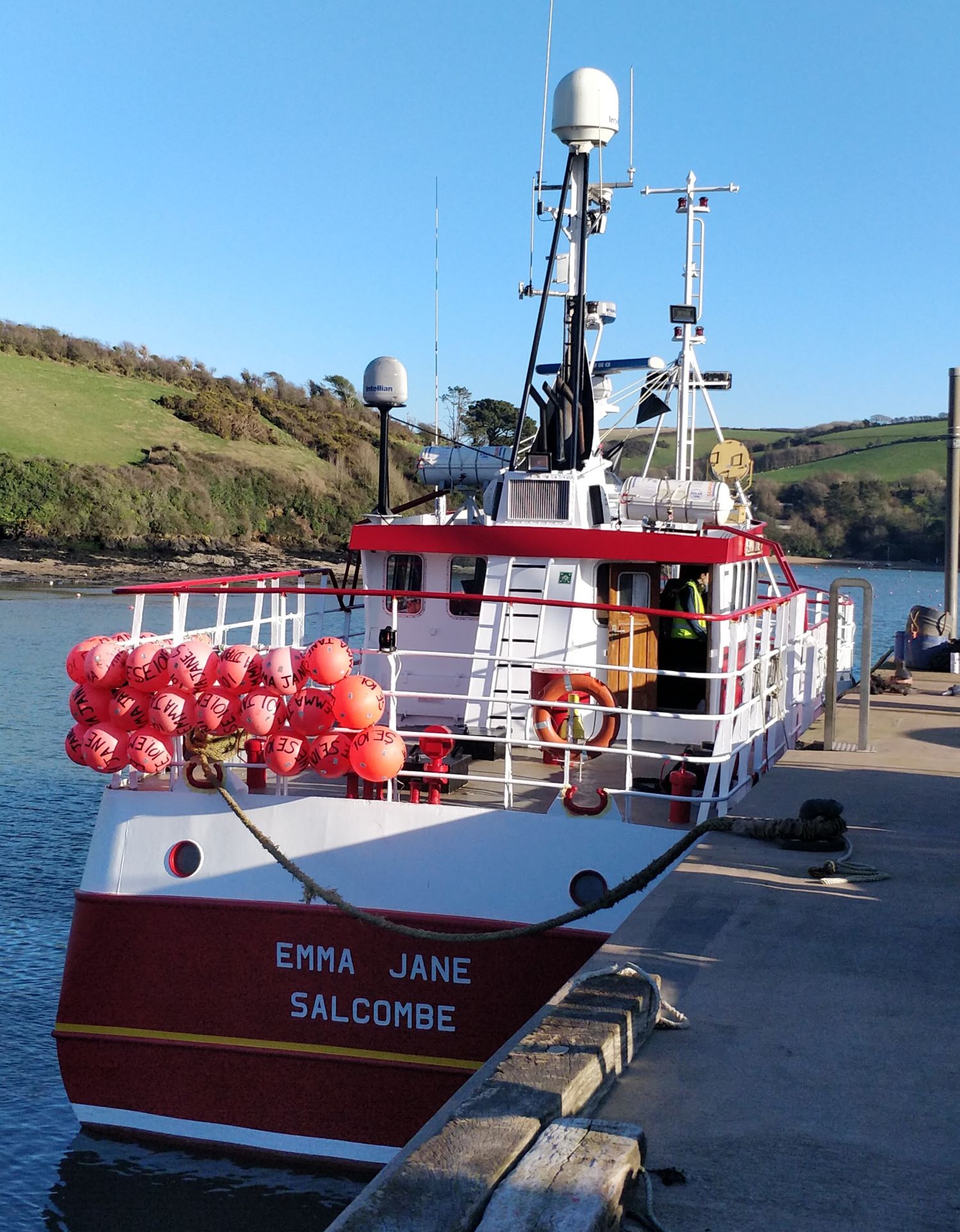
The Emma Jane, is an 18-metre super crabber owned by family business Favis of Salcombe, based in Devon.
This 317-kilowatt vessel was the first fishing vessel to have the EcoPro electrolyser installed four years ago, costing the business around £8,500 with 50% FaSS funding.
Kevin Favis explained that Ecomotus approached him, requesting an opportunity to install the new technology onto his vessel.
“Bringing emissions down and keeping the air clean is the main reason for having the technology, but you get fuel saving as well,” Kevin said.
“The installation was easy, and it looks neat in the engine room. A nice little package just bolted onto one of the bulkheads.”
Since installation, the Emma Jane saves around 10% on fuel (£350 a week). Kevin added that, although the Emma Janes fuel consumption remains the same at 4,000 litres a week, they’ve enhanced efficiency by intensifying the boat's workload and highlighted that with the Ecomotus EcoPro being remotely monitored from ashore, software is continuously updated to enhance efficiency.
Despite Caterpillar’s 500-hour engine oil change recommendation, Kevin finds the oil consistently in good condition, even after 600 hours.
The recent inspection report on the Caterpillar engine, by independent company Revolution Marine Engineering Ltd, disclosed that the oil samples, charge air cooler, valve gear, and cylinders of the Emma Jane were remarkably clean.
Minimal carbon build-up was observed despite the total hours run.
The inspection report added: “It is plausible that reduction in total diesel burnt by the introduction of hydrogen dosing has created a cleaner burn over the engines lifespan and has not induced any evident risk for early failure.”
Looking to the future
Early adoption of new technology to reduce greenhouse gas emissions helps the sector build on its reputation as a healthy, low-impact, and environmentally sustainable source of food.
The success stories of vessels like the Crystal Sea and the Emma Jane highlights the EcoPro’s contribution, not only to environmental sustainability, but also vessel operating cost reduction.
With streamlined maintenance and remote monitoring, Ecomotus' EcoPro Electrolyser is helping to lead the way in a more sustainable and cost-effective future for marine operations.
More information on Ecomotus can be found on their website: